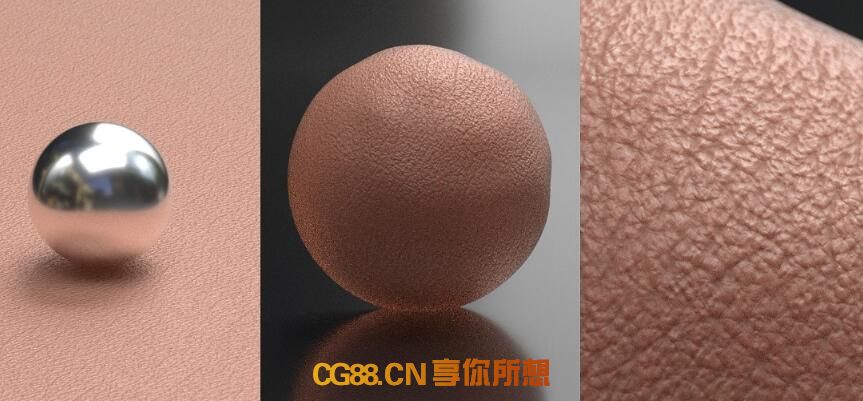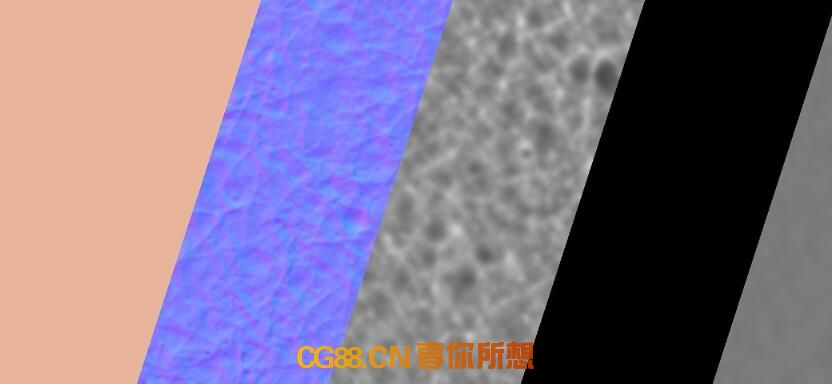texturing xyz Substance Source Skin Materials Substance皮肤纹理材质
DEVELOPING SUBSTANCE SOURCE – HUMAN SKIN MATERIALS
包含32个男性和女性人物皮肤材质预设,sbsar格式,支持Substance
Skin for cheek chin nose and forhead both male and female
免责声明-软件仅供学习和试用,请于下载后24小时删除,商用请购买正版!
DEVELOPING SUBSTANCE SOURCE – HUMAN SKIN MATERIALS
Allegorithmic on February 2 2017 | Substance Source
We are proud to share with all texture lovers a set of human skin textures now available on Substance Source, in collaboration with Texturing XYZ. Our selection includes 30 high-resolution skin material in RAW format with all the map derivations dedicated to digital human texturing.
Jeremy Celeste from Texturing XYZ kindly gave us an overview of how he started scanning high quality skin textures and the process of making them.
See the Human Skin Materials
Hi, Jeremy! Few of us know the talented person behind Texturing XYZ: can you tell us about yourself?
I started to work in the industry as a lighting TD and lookdev artist, lighting scenes and creating materials in VFX and commercials. So I have a more technical background and a strong interest in render engines. I also have a passion for photography like many lighting artists. I’ve hada particular interest for macrophotography since a young age.
Leo Ribeyrolles
Texturing XYZ is one of the most popular places to get awesome skin textures. How did you get your start?
I asked myself the question of how I could ally these two passions, photography and my background as lighting TD. Naturally, I felt the need to experiment with a technique called cross polarization, as well as the photometric technique. My ambition for TexturingXYZ was to offer to enthusiasts, freelancers and small studios textures that were only made in big-budget studios.
After working with cross polarization, I started experimenting with scans and surface displacement before finally producing results that met my expectations. This involved a lot of trial and error. Luckily I had the chance to work with lots of beta testers who helped me with their feedback. I developed a workflow which enables to separate the layers that today are known as secondary, tertiary and micro. This gives great flexibility during texture projection and use.
My main objective was also to provide high quality textures, in the sense that they could last in time and follow the evolutions of the industry. Providing 4K ready textures was key for me. I also chose to offer RAW format textures for the cross polarized scans, a native format which doesn’t compress the image like JPEG. This format directly comes out of the camera, so in terms of quality you can’t do better.
Leo Ribeyrolles
What is the process behind the creation of your assets? What are the benefits of using scans when it comes to human skin texturing?
I created from scratch a photometric multi-camera system, which enables image capture in the finest detail from almost all kinds of materials. On the other hand, I implemented a cross polarized photo studio capable of taking polarized and non polarized photos very quickly.
For scanning a person, age is my main criteria. The cross polarization technique then allows for suppression of specular reflections from a subject directly from the picture, without any post-processing.
The key for skin texture acquisition is the environment. Pictures must be taken without ambient, with a controlled lighting. For example, outside you would have a bluish ambient. That’s why I created my studios where I can truly control lighting and especially bounced lights.
More specifically for skins, there is a very important notion of the volume and strength of the light used. As human beings, we constantly move, we’re never immobile, and our heart beats, making our blood moves just beneath our skin. It’s thus crucial to take pictures at a very high speed in order to avoid motion blur.
What makes your textures unique?
The textures come at a very high resolution, which makes them very rich and detailed for people to use for creating photorealistic images.
Unique textures require specific workflow. In a pack, there are several types of textures: the secondary, tertiary and micro. The three layers allow separation of the frequencies. For example, the secondary removes the high frequencies of an image, while keeping the big volumes. The tertiary keeps the high frequencies. The micro is generated from the tertiary thanks to a program I developed, and that adds an additional layer of detail.
This flexible workflow allows you to gauge the strength and intensity of each layer independently. To this day, nobody offers these three textures.
Who is the typical audience for this type of asset?
A majority of feature films and commercials studios utilize my textures. Some game studios have also showed some interest, so I specifically created a specific micro skin face pack. These textures can be tiled and are immediately usable by small game studios who look for a high level of skin detail.
What kinds of projects are ideal for these textures? Why?
Mainly projects that involve photorealism and that are looking to save a lot of time. Sometimes, certain character artists in VFX spend days and even weeks working on skin textures, trying to recreate the smallest details like pores. This activity now usually drops to a single day for higher quality results. You only have to project the texture and watch the result once rendered.
Can you give us some tips for using Texturing XYZ textures?
The only really important thing is to retain a maximum of details from the original texture. If they are used in the wrong way, all the micro-details of the texture could be lost and therefore deteriorate the end result.
What is cross polarization?
Cross-polarization has long been used to reduce reflections and/or glare on various surfaces. Today, it’s a common technique used in the VFX and game industries where accuracy and high definition references are needed.
This technique is perfect for capturing the subsurface albedo component of a person and using it as a base texture map. Instead of using a traditional photography that contains both specular and albedo components, this one allows you to use data almost immediately, saving tons of cleaning time for texture and character artists.
Leo Ribeyrolles
What is a surface displacement map?
Surface displacement maps physically displace the mesh to which they are applied in order to create additional detail. This enables reproduction of relief directly on the 3D model, like skin pores, wrinkles, etc.
What is the future of 3D scanning?
For me the logical evolution would be material scans at an even higher resolution, in order to finally break what is called the uncanny valley, which is the barrier between what feels fake and real in 3D. The goal would be to not see any difference anymore between reality and CG. The massive arrival of 4K and 8K screen display will allow to greatly improve the quality of renders and thus of the offer of textures. Therefore, it’s important to think about the quality of textures that have to be made in order to keep up with these new screen resolutions.
Finally I would like to thank Allegorithmic for the long standing partnership and mutual support since a year. It has been a true relationship of trust and I’m very happy to work with you guys!
你可能也喜欢
- ♥ 原画资源-Substance高质量材质合集(满足所有接口的贴图材质)素材杂志CG88分享09/08
- ♥ [Substance材质] 最新60个substance painter材质包11/03
- ♥ [Substance材质] Alpha+SP材质球 中式欧式花纹等,接近3GB资源 包含alpha SP材质库 石头 草地 真是眼球等10/24
- ♥ SUBSTANCE SOURCE – MATERIALS07/07
- ♥ 【SP材质】-29组Substance Painter次世代材质贴图合辑 CUBEBRUSH SUBSTANCE CARE PACKAGE-CG艺术社09/24
- ♥ [Substance材质]140个Substance官网塑料材质球10/18



